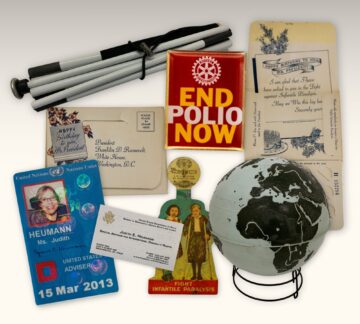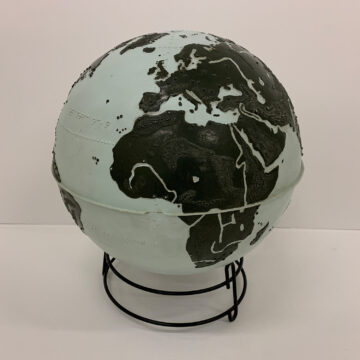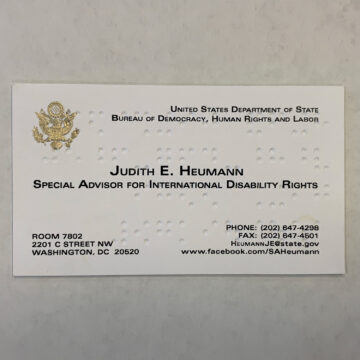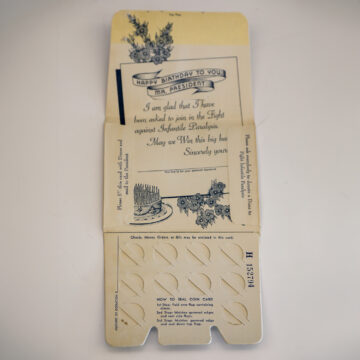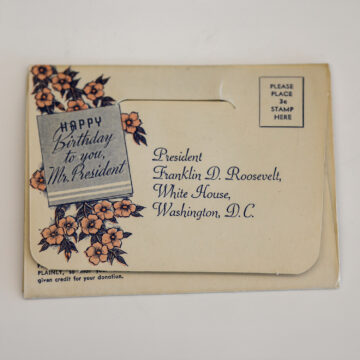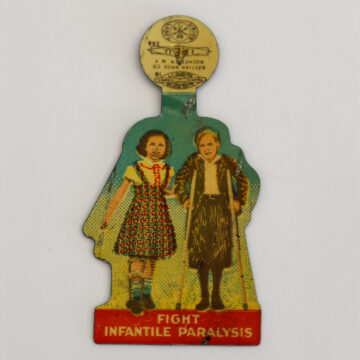People living with disabilities represent one of the largest and most groups of people in the world. July marks Disability Pride Month, a time to celebrate the disability community and its ongoing activism and commemorate the passage of the Americans with Disabilities Act (ADA) in July 1990.
The ADA fundamentally changed how disability is addressed in public life and, for the first time, ensured the civil rights of persons with disabilities. While the ADA established that persons with disabilities are equal under the law, discrimination and societal barriers still prevent many from enjoying equal participation in society and living with dignity.
While July is a time to celebrate, it’s also a time to raise awareness about the work needed to ensure all people live in an inclusive world. Diplomats at the U.S. Department of State help continue that work, particularly through the International Disability Rights office in the Bureau of Democracy, Human Rights, and Labor.
This exhibit case contains selections from the National Museum of American Diplomacy (NMAD) collection that celebrate the activism of people with differing abilities to ensure a more diverse, equitable, inclusive, and accessible world.
Disability Activism at the State Department
Two diplomats represented in NMAD’s permanent collection exemplify the fight for disability rights and equal participation in society: Avraham Rabby and Judy Heumann.
Avraham “Rami” Rabby was a blind Foreign Service Officer and a lifelong disability rights advocate. He served in the U.S. Foreign Service from 1990 to 2007. Judith “Judy” Heumann is often referred to as the “Mother of the Disability Rights Movement. She served as the first Special Advisor for International Disability Rights at the U.S. Department of State from 2010 to 2017.
Polio Eradication Campaigns
From 1890 until the 1960s, the polio virus sparked fear among American parents. The infection, often called “infantile paralysis,” as it disproportionately affected children and young adults, could lead to paralysis—sometimes permanently—or death.
At its peak in 1952, polio was more feared than Cold War threats of nuclear war. President Franklin D. Roosevelt was a polio survivor and founded the National Foundation for Infantile Paralysis. The National Foundation for Infantile Paralysis funded the creation of polio vaccines beginning in the late 1930s, which resulted in the first vaccine in 1953.
Polio was eradicated from the United States in 1979 thanks to routine vaccination. However, polio still infects children around the world. The work of diplomats, doctors, and civic groups has helped bring global eradication closer to reality. Polio eradication campaigns have reduced the number of children paralyzed by polio from 350,000 cases a year in 1988 to only 12 in 2023.
This exhibit case contains selections related to polio eradication campaigns both nationally and internationally.
See the Exhibit
This exhibit will be on display in the lower level of the NMAD pavilion throughout July 2024. Non-State Department employees can view the exhibit during any of our July public programs.
